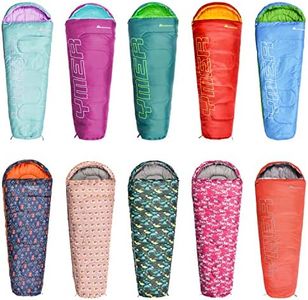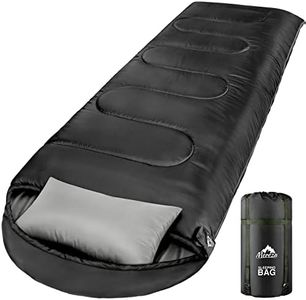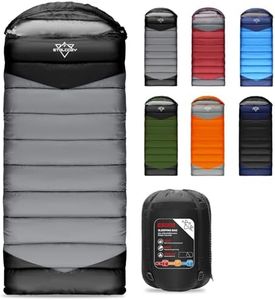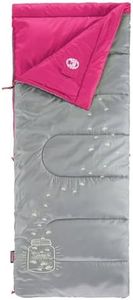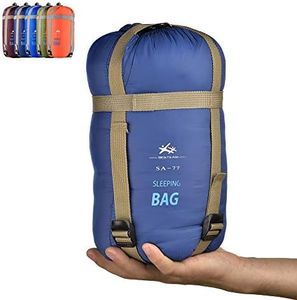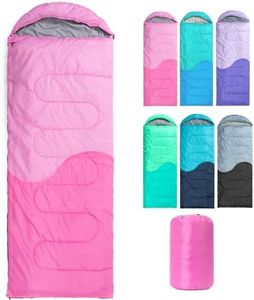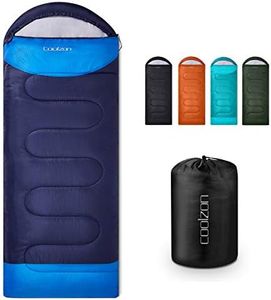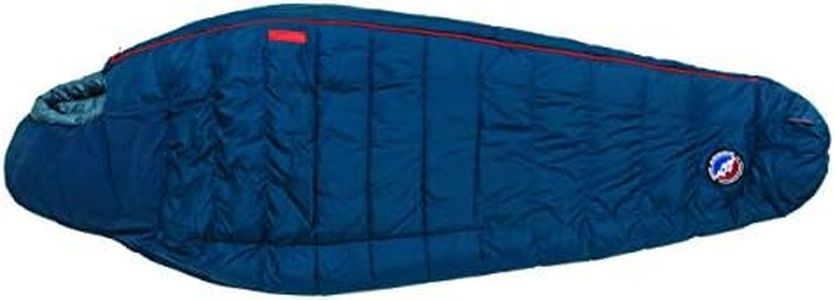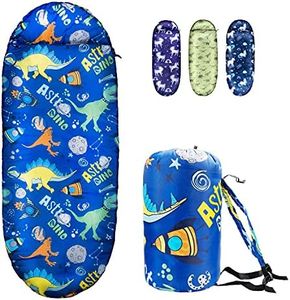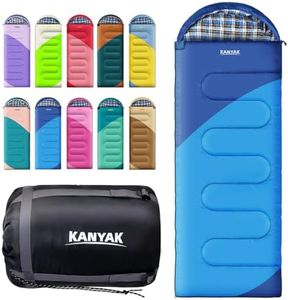We Use CookiesWe use cookies to enhance the security, performance,
functionality and for analytical and promotional activities. By continuing to browse this site you
are agreeing to our privacy policy
10 Best Kids Sleeping Bags
From leading brands and best sellers available on the web.Buying Guide for the Best Kids Sleeping Bags
Choosing the right sleeping bag for kids can make a big difference in their comfort and safety during sleep, whether it’s for camping, sleepovers, or naptime. When shopping for a kids' sleeping bag, focus on key factors that affect warmth, fit, ease of use, and maintenance. Understanding the main specs ensures the sleeping bag you select suits the environment and how your child will use it.Temperature RatingThe temperature rating of a sleeping bag indicates the lowest temperature at which it can keep the average sleeper comfortable. It’s an important factor because kids can be more sensitive to cold than adults. Normally, ratings are grouped into warm-weather (above 10°C/50°F), three-season (around 0–10°C/32–50°F), and cold-weather (below 0°C/32°F) bags. For sleepovers indoors, a basic warm-weather bag is enough. For camping, especially in fall or early spring, opt for a three-season bag. If your child will be outdoors in chilly conditions, consider a cold-weather rated bag. Think about where your child will use the bag most often to choose an appropriate temperature rating.
Bag Size and FitSize and fit refer to both the length and width of the sleeping bag, which should match your child’s height and body shape. A bag that’s too large won’t retain heat well, while one too small will be uncomfortable. Length is typically labeled with recommended height or age ranges. Some bags are shaped for toddlers, while others are better for pre-teens. It’s best to choose a bag that leaves some room to grow but isn’t overly spacious. Consider your child’s growth rate and whether you prefer a snug mummy shape for warmth or a roomy rectangular shape for comfort and movement.
Insulation TypeInsulation is what traps heat inside the sleeping bag. The two main types are synthetic and down. Synthetic fill is common for kids because it dries quickly and is easy to wash if there are accidents or spills. Down insulation is lighter and compresses smaller, but it’s usually pricier and harder to clean. Synthetic insulation is usually better for kids’ sleeping bags, offering warmth, resilience, and easy care, making it a practical choice for families.
Weight and PackabilityWeight and packability refer to how heavy the bag is and how small it packs down. For at-home use or car camping, weight isn’t a big concern, but if your child will carry their sleeping bag (for hikes or school trips), a lighter, more compact bag may be helpful. Sleeping bags for younger kids are typically smaller and lighter by default. Consider how your child will use and transport the bag, and choose a balance that suits those needs.
Features (Hood, Zippers, Pockets)Additional features can enhance the convenience and comfort of a kid’s sleeping bag. A hood adds warmth to the head area, draft tubes prevent cold air from seeping in through the zipper, and stash pockets might help store a flashlight or favorite toy. Some bags have fun designs or glow-in-the-dark elements, which make bedtime more enjoyable for children. Think about which features will make your child more comfortable or excited to use the sleeping bag.
Ease of CleaningSince accidents and messes are fairly common with children, the sleeping bag’s ease of cleaning is important. Most kids’ bags use machine-washable materials, but check care instructions before buying. Choosing a sleeping bag that’s easy to wash and dry can save time and keep the bag fresh and hygienic.


